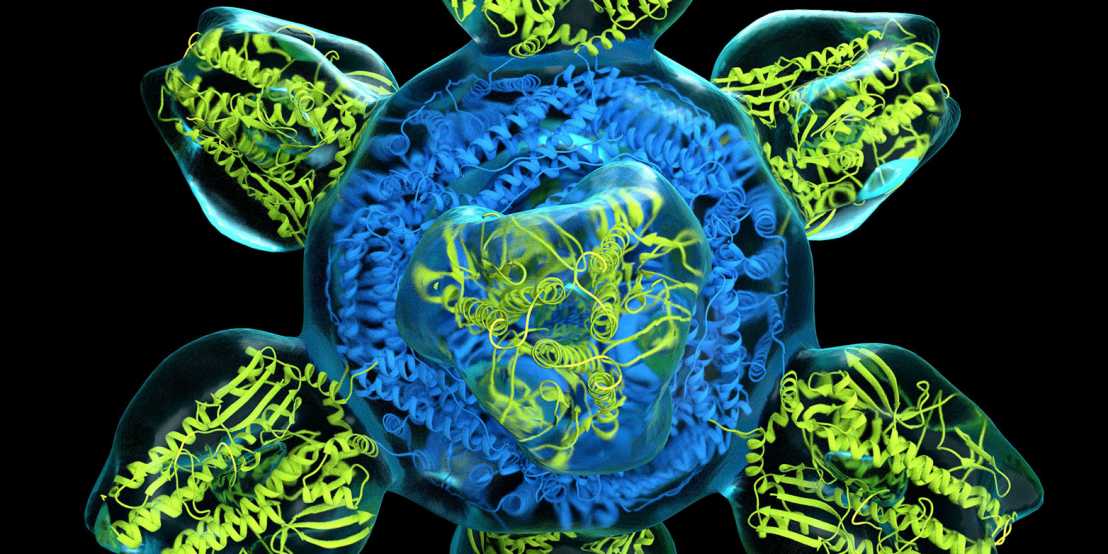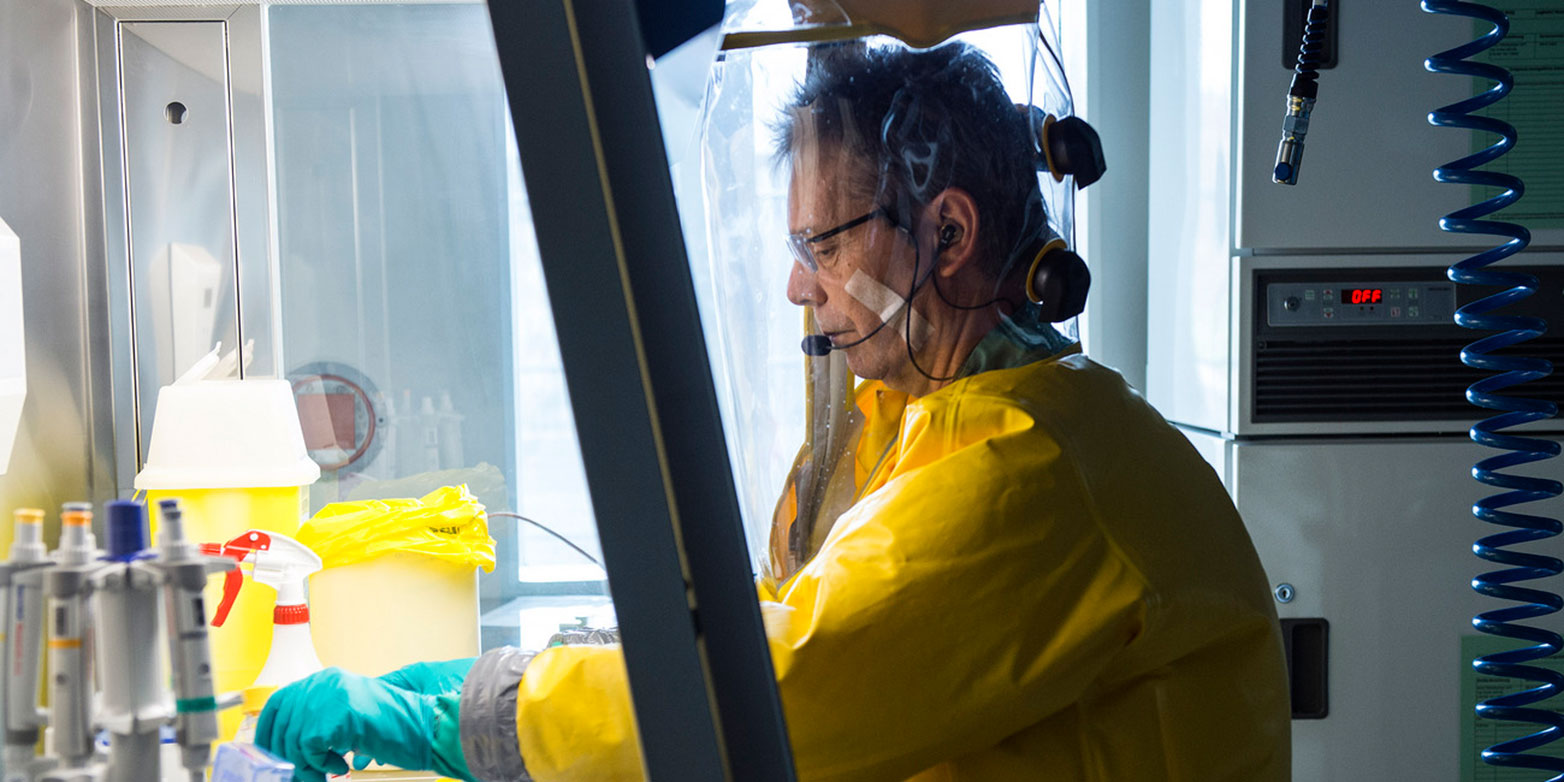Raising awareness of the risks of natural sciences research
New research findings from biology and chemistry are a blessing for the world of medicine. However, if they are misused for military purposes, they can reveal a darker side. How to deal with the “dual-use dilemma”? This was the subject of a course aimed specifically at biology and chemistry students.
Influenza viruses are constantly changing, forcing the human body to adapt its immune defence on a continual basis. But what about types of viruses that do not infect humans – such as avian flu? Will they one day evolve and pose a risk to humans? This question can be investigated in the laboratory using genetic methods from the life sciences. For example, researchers can strengthen certain gene activities to find out which changes could make the avian flu virus dangerous to humans.
Indeed, in 2011, Dutch and Japanese researchers working in high security laboratories were able to modify the avian flu virus so that it could be passed from birds to mammals. The experiment triggered an international debate about the risks and opportunities of research into potentially dangerous viruses.
The findings could form the basis for future vaccines or for measures that prevent their spread. But what would happen if someone made influenza viruses – or other pathogens – more contagious in order to use in wars or terror attacks, or if they were modified in order to hinder diagnosis or render vaccines ineffective?
Benefit or harm? The dual-use dilemma
Claudia Otto works at the Center for Security Studies (CSS), ETH Zurich’s centre of competence for security policy. She studies the complex risks that can arise from scientific and technological progress at the interface between biology, chemistry and security policy.
“Research into the avian flu virus is one example of the dual-use dilemma. This states that knowledge, technology and products of research that are developed for legitimate purposes and for the benefit of humankind could also be used to the detriment of humans and the environment,” explains the risk researcher and biochemist. Otto wrote her doctoral thesis on the topic of DNA repair and cytotoxicity.
At the CSS, Otto also develops training concepts in order to raise students’ and incoming researchers’ awareness of dual-use issues. “It’s vital for incoming researchers to be able to critically evaluate the risks of their research in order to preserve research integrity in the face of emerging security concerns,” she says.
Oliver Thränert adds: “The aim of raising awareness is to ensure that students and researchers appreciate the potential for their research to be misused and what they can do about it – for example, in the form of codes of conduct.” Thränert leads the think-tank that provides policy and research consultancy at the CSS.
In autumn semester 2017, Otto and Thränert delivered their first course on the dual-use dilemma for ETH students of biology, chemistry and the health sciences. “The aim of the course is for students to raise awareness, at an early stage in their education, that even valuable research findings and useful technologies can pose a security risk,” says Otto.
The course was attended by a total of 21 undergraduate, graduate and doctoral students from northern and southern Europe, North America and Asia. Using case studies that included the debate surrounding avian flu, they delved into the various perspectives of the dual-use problem.
Knowing how security policy works
One important aspect of the course involved familiarising the students with the international political, military and institutional background that is intended to ensure that biological and chemical technologies are not used for military purposes.
Historical examples of offensive biological and chemical weapons programmes were discussed, and the course invited guest speakers involved in the practical side of chemical and biological security and international security policy.

“For us, it’s important that students understand how security policy decisions are made and how arms control operates in relation to biological and chemical weapons,” explains Thränert.
In the US, for example, the debate around the 2014 avian flu virus led to the discontinuation of funding for research into potentially dangerous viruses. The government lifted this moratorium in December 2017. From now on, a panel at the National Institutes of Health will review the security aspects of research proposals before they receive funding.
Risk-related collaboration with Spiez Laboratory
A key part of arms control centres around the international conventions that prohibit the use of biological and chemical weapons, to which Switzerland is a signatory. Spiez Laboratory is Switzerland’s specialist technical and research centre responsible for protection against nuclear, biological and chemical hazards, arms control and environmental analyses.
Raising students’ and researchers’ awareness is also part of a wider collaboration between the CSS and Spiez Laboratory in the area of risk assessment. This collaboration includes the establishment of a network of analysis laboratories that can provide scientifically and politically accepted evidence of the use of biological or chemical weapons in suspected cases.
Furthermore, ETH Zurich and Spiez Laboratory organise the Spiez Convergence every two years. At this international conference, experts from the worlds of academia, industry and security policy meet to assess the risks and opportunities of new scientific and technological developments. The next Spiez Convergence will be held in September 2018.
References
Barmet C, Thränert O. The Chemical Weapons Ban in Troubled Waters. CSS Analyses in Security Policy, 2017, 207. Download
Otto C, Thränert O. Bioweapons and Scientific Advances. CSS Analyses in Security Policy, 2016, 198. Download
Otto C. Kooperation mit dem Labor Spiez: Risiken aus der Konvergenz von Biologie und Chemie. Bulletin on Swiss Security Policy, 2016, 139 (50), pp. 157–162. Download

